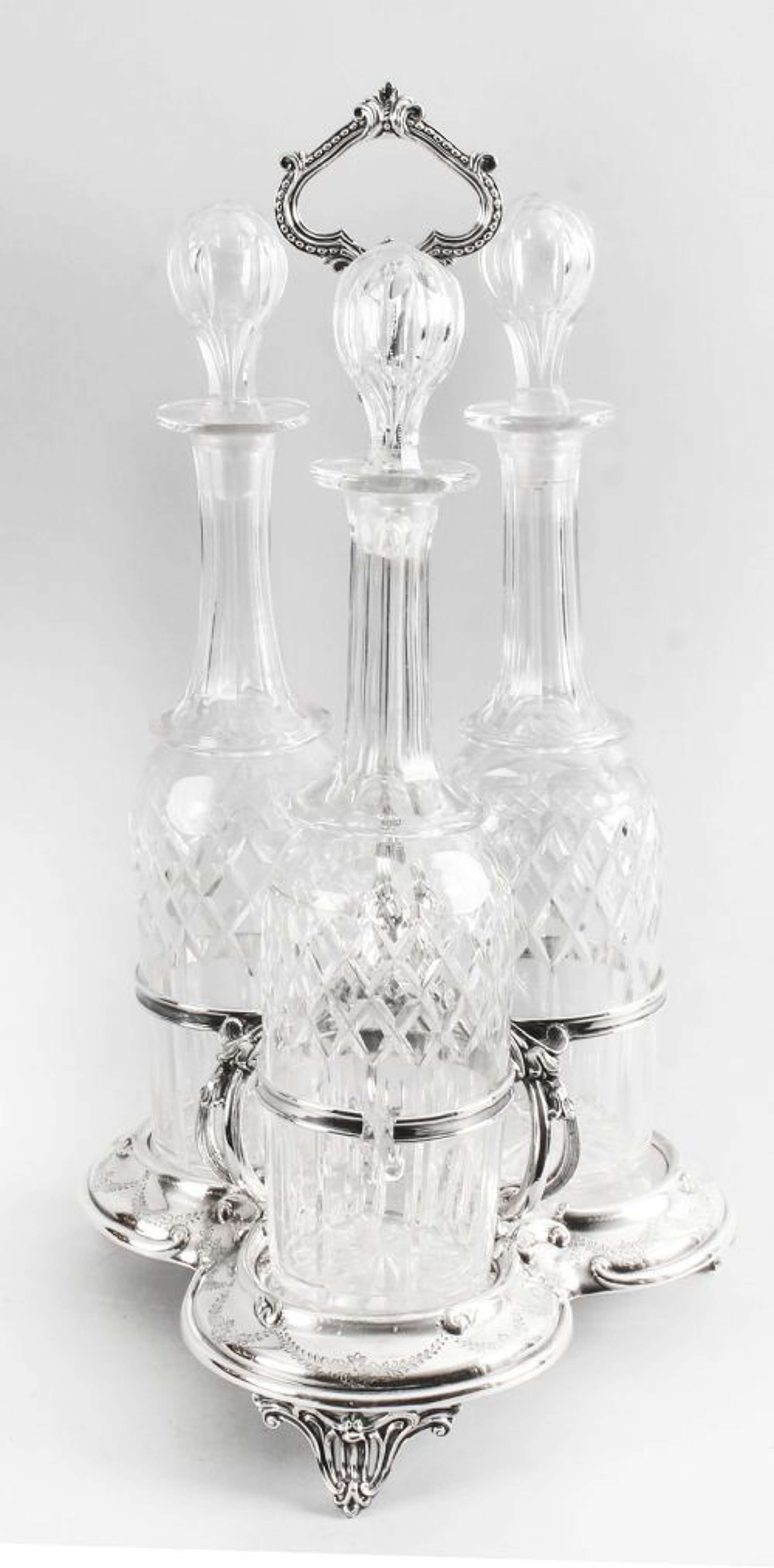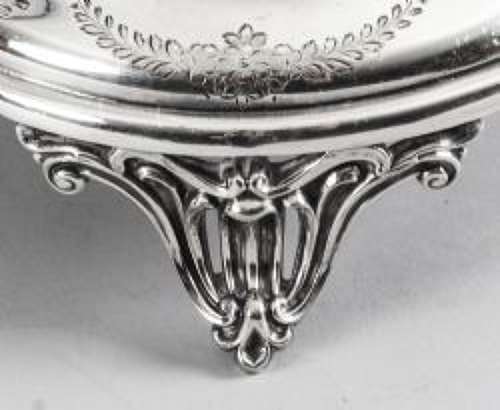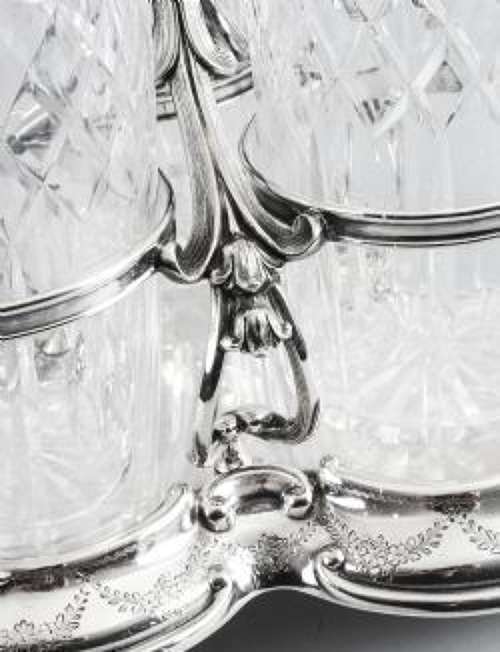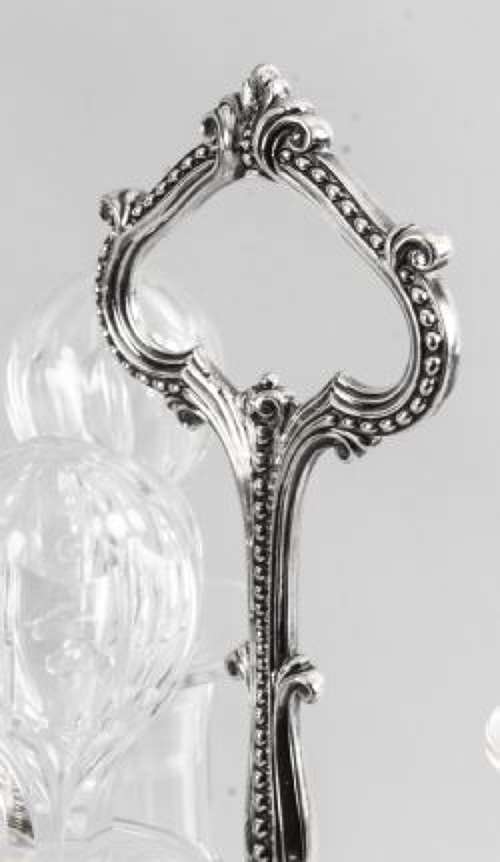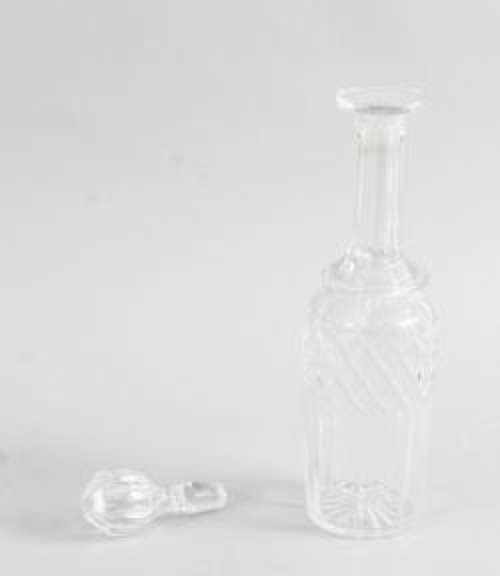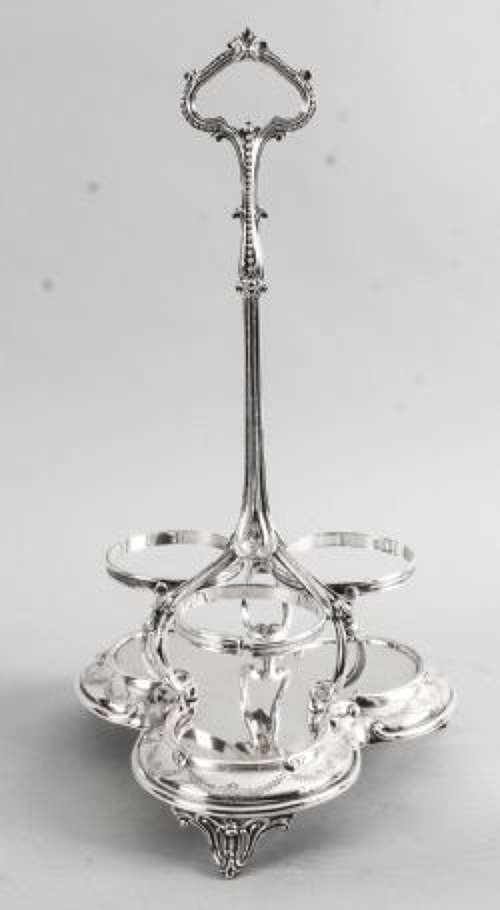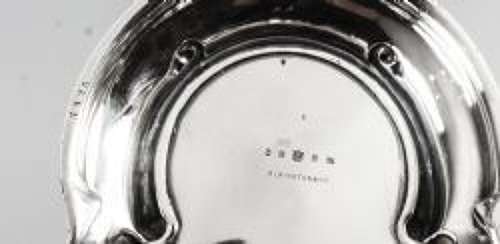Antique Old Sheffield Silver Plate Decanter Stand Tantalus 19th C
Delivery Quote Request
Please fill in the form below to request a delivery quote from Regent Antiques.
Contact Regent Antiques
 London, United Kingdom
London, United Kingdom
Simply fill in the below form to get in touch with Regent Antiques regarding this item.
About this item
Good quality Elkington plate three bottle tantalus
This is an attractive Old Sheffield silver plated tantalus stand with three Bohemian decanters with stoppers, in the classic English style and circa 1840 in date.
The silver plated decanter stand has a central spade handle and waved scroll and form borders.
The craftsmanship is second to none and this beautiful set is sure to add a touch of class to your dining experience.
Condition:
In excellent condition, please see photos for confirmation of condition.
Dimensions in cm:
Height 44 x Width 24 x Depth 23
Dimensions in inches:
Height 17.3 x Width 9.4 x Depth 9.1
Tantalus is a type of liquor decanter in which the bottle stoppers are locked down tightly by a metal bar. This was to prevent the theft of the contents by servants. Like the name suggests, the decanters themselves are visible, drawing temptation while unattainable. A key is required for entry.
The most common types of tantalus holds three bottles or decanters while there are also smaller types housing only two. There are many different forms of tantalus. Often the encasement has metal handles on both sides and ornately carved decor. Crystal and metal versions are also a beautiful option when choosing a tantalus.
Tantalus derived its name from the story of the mythological Greek king, Tantalus. To be tantalized is to be tempted with the unattainable, and the king, condemned to an eternity in Hades, was sorely tested. He was forced to stand forever in water that, when he bent to drink, would recede and to gaze upon foods he could only reach for and never grasp.
The 1800s saw our Victorian predecessors apply the Kings name to the lockable decanter.
Old Sheffield Plate - or fused plate as it is sometimes known, was the first commercially viable method of plating metal.
The material was accidentally invented by Thomas Boulsover, of Sheffield's Cutlers Company, in 1743. While trying to repair the handle of a customer's decorative knife, he heated it too much and the silver started to melt. When he examined the damaged handle, he noticed that the silver and copper had fused together very strongly. Experiments showed that the two metals behaved as one when he tried to reshape them, even though he could clearly see two different layers.
Boulsover set up in business, funded by Strelley Pegge of Beauchief, and carried out further experiments in which he put a thin sheet of silver on a thick ingot of copper and heated the two together to fuse them. When the composite block was hammered or rolled to make it thinner, the two metals were reduced in thickness at similar rates. Using this method, Boulsover was able to make sheets of metal which had a thin layer of silver on the top surface and a thick layer of copper underneath. When this new material was used to make buttons, they looked and behaved like silver buttons but were a fraction of the cost.
The technique Boulsover developed was to sandwich an ingot of copper between two plates of silver, tightly bind it with wire, heat it in a furnace and then mill it out in to sheet, from which objects could be made.
Our reference: 09283
Internal Ref:
09283
Date of manufacture : 19th Century
Additional Information
765391 (AB-182910)
W: 24cm (9.4")H: 44cm (17.3")D: 23cm (9.1")
19th Century
![]() London, United Kingdom
London, United Kingdom
Regent Antiques was established in 1980. Born out of a natural love for art and beautiful objects, we have been a highly respected member of the antique fraternity ever since. Industry bodies of which we are a member include LAPADA and CINOA. Over the decades our business has gradually evolved...

